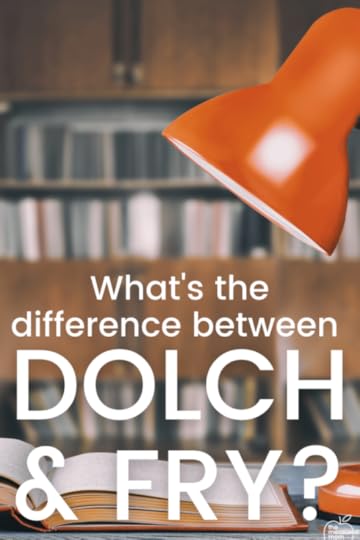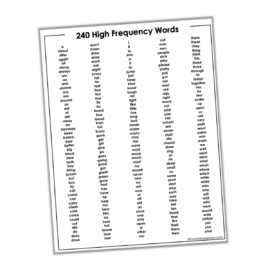What’s the difference between Dolch and Fry sight words?

In our first post of this series we explained the difference between sight words and high frequency words.
Sight words are words we know by sight, without needing to sound them out or guess.High frequency words are words that appear frequently in the English language.Our goal for our students is that they turn high frequency words INTO sight words.But where do we get these high frequency words FROM?
Enter Dolch and Fry.
What is the Dolch word list?The Dolch word list was published by Dr. Edward Dolch in 1936.
Dolch was a proponent of the “look-say” method of teaching reading. He believed that reading instruction should begin by teaching children to memorize words based on their shape.
(Now that we understand how the brain learns to read, we understand that this is a faulty method of teaching reading).
In his book, Teaching Primary Reading, Dolch even stated that first graders should learn only sight words, and teachers should wait until second grade to introduce phonics (!!).
For decades, the science of reading has shown the importance of beginning phonics instruction. Therefore, we need to seriously question completely abandon Dolch’s approach.
However, his original list of 220 high frequency words remains popular today.
This list of 220 words contains no nouns; Dolch later created a set of 95 nouns, but his original list consists of “service words” because these words appear in any type of text, no matter the content.
You’ve likely found lists of Dolch words organized by grade level.
However, these groupings really don’t make sense. For example, “yellow” is on the pre-primer list, but “if” is on the third grade list.
Huh?
What is the Fry list?Edward Fry, like Edward Dolch, believed in the look-say method of teaching reading.
He did acknowledge that teachers should teach phonics, but he didn’t have much to say about it. Instead, he focused on teaching students to memorize the most common high frequency word from his Fry Lists, which contain all parts of speech.
According to Fry, in his book, How to Teach Reading, students should learn the first 100 words in their first year of school, the second hundred in the second year, and the third hundred in the third year.
Is there anything wrong with using the Dolch and Fry lists?There is nothing wrong with having lists of high frequency words that students should learn.
The issue is HOW we teach them, and WHEN.
“We need to bury the idea that Dolch words, Fry words, or words from any other high frequency word list need to be taught through memorization. Rather, they should be included in phonics instruction so that, as early as possible, students use spelling patterns to read a greater variety of words than just those on high frequency lists.”Source: COMPARING THE DOLCH AND HIGH FREQUENCY WORD LISTS, by Farrell, Osenga, & Hunter
In the upcoming posts in this series, we’ll examine HOW and WHEN to teach high frequency words.
In the meantime, you’re invited to download a list of high frequency words
When I create sight word resources, I know that teachers are often required to teach words from both the Dolch and Fry word lists.
I’ve created a list of 240 words that includes the Dolch 220, Fry’s first 100, and a few others.

Get your free word list here
CLICK TO DOWNLOAD
Stay tuned for the rest of this series!
Part 1 Part 2 Part 3 Part 4 Part 5 Part 6 Part 7 Part 8 Part 9 Part 10
The post What’s the difference between Dolch and Fry sight words? appeared first on The Measured Mom.
Anna Geiger's Blog
- Anna Geiger's profile
- 1 follower



